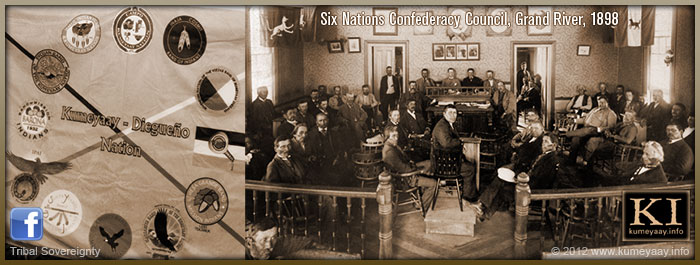|
Español | 中文 | 日本 | Italiano | Française | Deutsch | 한국어 | Россию | پارس
"No right is more sacred to a nation, to a people, than the right to freely determine its social, economic, political and cultural future without external interference. The fullest expression of this right occurs when a nation freely governs itself. We call the exercise of this right Self determination. The practice of this right is Self government."
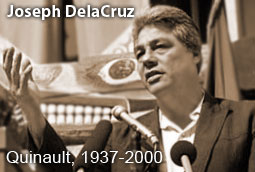
Joseph Burton DeLaCruz (1937-2000)
- President of Quinault Indian Nation
- President of National Congress of American Indians
- Chairman of World Council of Indigenous Peoples
Over a period of more than 25 years as Quinault Nation President, Joe Burton created a model of community leadership, engaged his people in a long-term program of indigenous nation building, and established high standards for integrity and fairness in the exercise of tribal governing authority. - nwindian.evergreen.edu
"Great nations, like great men, should keep their word.”
- Associate Justice Hugo Black wrote the dissent for the United States Supreme Court (Federal Power Commission v. Tuscarora Indian Nation, 1960). Justice Black argued that the definition of reservation was trivial and should not have been analyzed by the court. In his dissent Black wrote of a string of injustices by the United States government and violations of treaties. He added that this ruling was another broken promise. He finished his dissent with: Great nations, like great men, should keep their word. - wikipedia.org
| TRIBAL SOVEREIGNTY IN THE UNITED STATES: |
|
WIKIPEDIA: Tribal sovereignty in the United States refers to the inherent authority of indigenous tribes to govern themselves within the borders of the United States of America. The US federal government recognizes (federally-recognized tribal bands) as "domestic dependent nations" and has established a number of laws attempting to clarify the relationship between the United States federal and state governments and the tribal nations.
The United States Constitution and federal laws grant federally-recognized Indian tribes more sovereignty than is granted to states or local jurisdictions, yet they do not grant full sovereignty equivalent to foreign nations, hence the term "domestic dependent nations...".
SOVEREIGN AMERICAN INDIAN TRIBES OF SAN DIEGO COUNTY MAP:
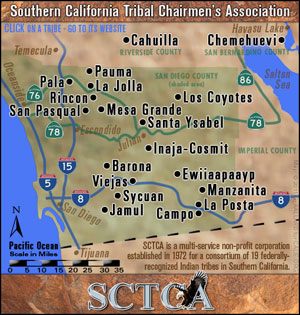
SOUTHERN CALIFORNIA TRIBAL GUIDE: Maps, official websites and how to contact information of the sovereign, federally-recognized SOCAL Indian reservations in North America.
|
SOVEREIGN IMMUNITY
Understanding tribal sovereignty from a business perspective: |
|
SUE WOODROW minneapolisfed.org: Native American tribes consider SOVEREIGN IMMUNITY to be crucial for the protection of tribal resources and the promotion of tribal economic and social interests. Because of the uncertainties surrounding this doctrine, however, this very same tool of self-determination may be viewed as a significant obstacle to the non-Indian investor, lender or developer who otherwise may be interested in doing business in Indian Country.
Accordingly, questions that have long been asked are: What is sovereign immunity? And what does it mean in the tribal context?....
Susan Woodrow is a senior counsel at the Federal Reserve Bank of Minneapolis and an active volunteer at the Pine Ridge Indian Reservation in South Dakota.
|
| EARLY HISTORY OF AMERICAN TRIBAL SOVEREIGNTY: |
|
THE MARSHALL TRILOGY, 1823-1832
Three key 19th century US Supreme Court decisions, The Marshall Trilogy, affirm the sovereign legal and political standing of federally-recognized Indian tribes:
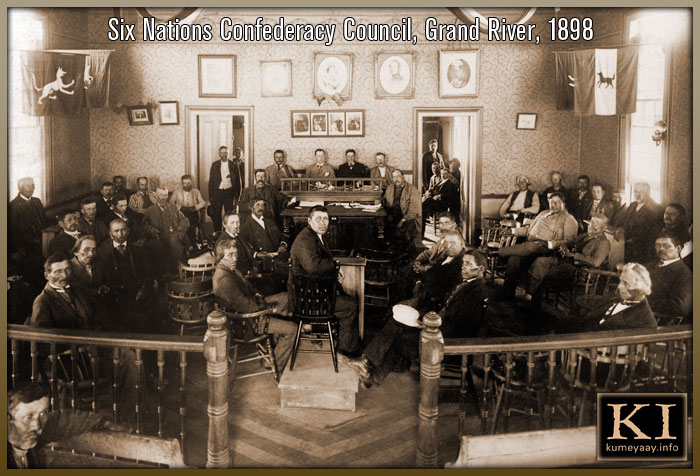
Known today as the Iroquois (an association of several North American indigenous tribes) — aka the Iroquois Confederacy, Iroquois League, Haudenosaunee or "People of the Longhouse" — the Six Nations Confederacy Council pictured in session, Grand River, 1898.
In our every deliberation, we must consider the impact of our decisions on the next seven generations.
- Iroquois maxim (circa 1700-1800)
|
| TREATIES WITH TRIBAL NATIONS: |
|
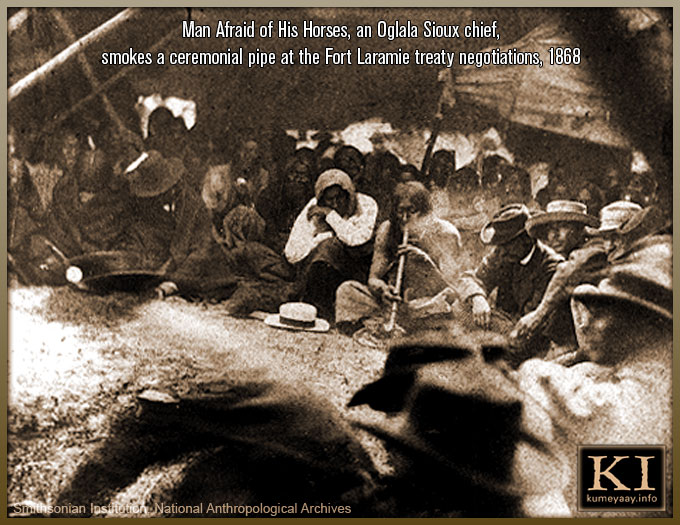
Oglala Chief Man Afraid of His Horses pictured smoking a ceremonial Indian pipe during U.S. government Treaty of Fort Laramie (1868) negotiations with the Lakota Sioux Nation. Technology note: This historical Indian photograph is extremely rare for a couple reasons; photography in the field barely existed in the 1800s when it was taken (it's a wonder it survived), and it's a natural photographic record of one of the last U.S. federal government-tribal treaty scenes in America.
www.mpm.edu: The last treaty the United States government made with an Indian tribe was in 1868. After 1871, formal agreements replaced treaties, but the treaties that had been made previously between the United States and Indian tribes are still recognized as valid.
As such, today the United States government recognizes that federally-recognized Indian tribes in the United States possess a certain measure of sovereignty as part of the Supreme Law of the land, as provided for in the U.S. Constitution, the treaties must observed.
Because these treaties are still in force, the provisions written into them, such as establishing land reservations, off-reservation hunting and fishing rights, and the right to self-government are recognized as well.
WIKIPEDIA lists an INDEX OF 89 TREATIES the federal government made with Indian tribes.
|
| BACKBONE OF MODERN INDIAN RIGHTS IN AMERICA: |
|
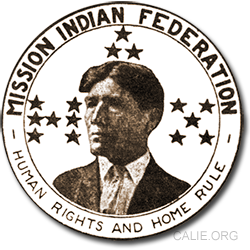
"Human Rights and Home Rule"
One powerful 20th century grassroots California Indian political organization whose members fought successfully for Indian rights is the MISSION INDIAN FEDERATION (active circa 1919-1965). MIF members are credited for providing the backbone that today guarantees equal rights for American Indians as U.S. citizens under the United States Bill of Rights.

Click on photo for MIF poster.
In 1934, Commissioner of Indian Affairs John Collier (1933-1945) described the MIF's aspirations toward tribal sovereignty saying the organization "resisted the work of the Indian service in the spirit of ousting a foreign power from the native soil or beating off an invasion of a foreign power."

Like, Share, Comment on Facebook: "Mission Indian Federation"
|
| UNITED STATES BILL OF RIGHTS: |
|
WIKIPEDIA: The United States Bill of Rights is the collective name for the first ten amendments to the United States Constitution...these limitations serve to protect the natural rights of liberty and property including freedoms of religion, speech, a free press, free assembly, and free association, as well as the right to keep and bear arms.
Together these documents form the supreme law of the United States of America. They are the framework for the organization of the United States government and for the relationship of the federal government with the states, citizens, and all people within the United States.
|
|
But originally (1791), the Bill of Rights included legal protection for white men only and it excluded most other races in America, including Native Americans and all women.
Native Americans could not become U.S. citizens until the Indian Citizenship Act of 1924 was signed into law by President Calvin Coolidge. Yet even with the Indian Citizen Act legalized, U.S. citizenship and voting rights for American Indians were not easy procedures or a sure thing for most Native people who wanted them...women were granted the right to vote in 1920, but it wasn't until around 1960 that Native American Indians could legally vote in every state.
The Bill of Rights, A Summary: WEBSITE us-immigration.com
|
| PUBLIC LAW 280: |
|
WIKIPEDIA: Public Law 280 (Pub.L. 83-280, August 15, 1953) is a federal law of the United States establishing "a method whereby States may assume jurisdiction over reservation Indians," as stated by Arizona Supreme Court Justice....
Public Law 280 and Law Enforcement in Indian Country – Research Priorities
FULL TEXT www.tribal-institute.org
|
| DISCOVERY DOCTRINE OF DISCOVERY: |
|
WIKIPEDIA: The Discovery Doctrine is a concept of public international law expounded by the United States Supreme Court in a series of decisions, most notably Johnson v. M'Intosh in 1823. The doctrine was Chief Justice John Marshall's explanation of the way in which colonial powers laid claim to newly discovered lands during the Age of Discovery.
Under this archaic doctrine, legal title to newly-discovered lands lay with the government whose representatives explored and occupied a territory whose inhabitants were not subjects of a European Christian monarch. The doctrine has been used primarily in legal rulings to invalidate or ignore aboriginal possession of tribal homelands in favor of colonial or post-colonial government claims.
Think for a moment — the Supreme Court of the United States is still legitimizing this argument to legalize the taking of ancestral homelands the tribes occupied for thousands of years prior to European intrusion and formation of the United States government....
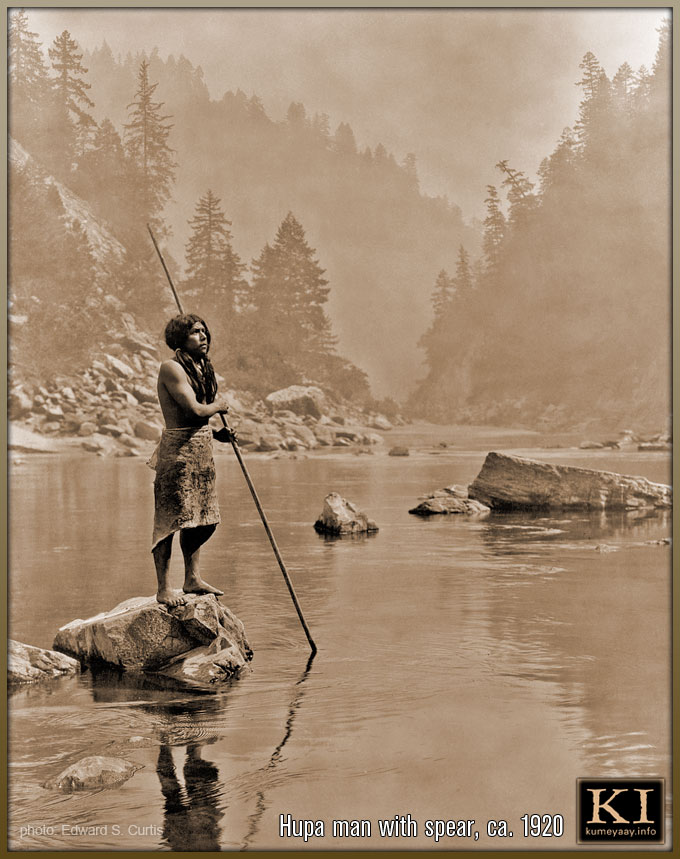
"A Smoky Day at the Sugar Bowl" (Lake Tahoe region, one of the most beautiful places on Earth) — Hupa Indian man standing on rock holding spear, circa 1923. Photo Edward S. Curtis Collection (Library of Congress).
The ground on which we stand is sacred ground. It is the dust and blood of our ancestors.
- Chief Plenty Coups, Crow (1848 - 1932)
|
|
STEVE NEWCOMB on the Doctrine of Discovery
LEGACY, ORIGINS & US Law, Five Hundred Years of Injustice:
When Christopher Columbus first set foot on the white sands of Guanahani island, he performed a ceremony to "take possession" of the land for the king and queen of Spain, acting under the international laws of Western Christendom.
Although the story of Columbus' "discovery" has taken on mythological proportions in most of the Western world, few people are aware that his act of "possession" was based on a religious doctrine now known in history as the Doctrine of Discovery.
Even fewer people realize that today - five centuries later - the United States government still uses this archaic Judeo-Christian doctrine to deny the rights of Native American Indians....
Steven T. Newcomb wrote the book: "PAGANS PROMISED LAND • Decoding the Doctrine of Christian Discovery".
|
| MANIFEST DESTINY |
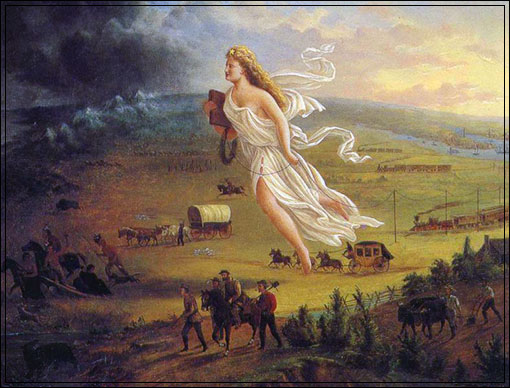
Manifest Destiny: The religious belief that the United States should expand from the Atlantic Ocean to the Pacific Ocean in the name of God. In 1872 artist John Gast painted this popular scene of people moving west that captured the view of Americans at the time. Called "Spirit of the Frontier." (wikipedia.org)
Ke T’ona Takuon Takuwe (The Many Reasons Why):
Manifest Destiny and Other Crimes Against The Native American Nations
by Shane Larsen (Lakota Sioux)
April 30th, 2012
Exordium
Since its inception in 1776, the United States of America has been considered the world’s most prominent advocate for freedom and liberty. Its emphasis on liberty and equality results from this nation’s dedication to and founding upon the Christian proposition that all men are created equal by God. This idea is clearly defined by influential Americans in their proclamation of independence from Great Britain. As stated in the Declaration of Independence, “We hold these truths to be self evident, that all men are created equal, that they are endowed by their Creator with certain unalienable rights.” It should be noted that the American Founding Fathers’ understanding of equality was inclusive of all of humanity.
Yet if this were true, then why, when it came to the Native Americans, did concern over their human rights and equality seem to disappear? MORE OF SHANE LARSEN'S THESIS ON CALIE.ORG
|
| UNITED STATES DEPARTMENT OF THE INTERIOR: |
|

Department of the Interior (DOI) letter, 2011:
The Department of the Interior has a solemn responsibility to uphold the federal government’s unique government-to-government relationship with federally-recognized American Indian and Alaska Native tribes, as provided for by the Constitution of the United States, U.S. treaties and court decisions, presidential executive orders and federal policies and administrative actions.
We recognize that a legacy of injustice and broken promises shapes the history of the federal government’s relationship with the American Indian and Alaska Native people. We are therefore working to turn the page on the federal government’s pattern of neglect of this community and, instead, build a strategy for empowerment that helps the tribal nations forge futures of their own choosing.
To chart this new path, we are restoring the government-to-government relationship between the federal government and these tribal nations because “self-determination,” “sovereignty,” “self-government,” “empowerment,” and “self-reliance” are not abstract concepts. Rather, they are the tools that will enable tribal nations to shape their collective destiny. This is why Interior is committed to partnering with American Indian and Alaska Native communities to help them prosper by expanding education and employment opportunities for youth and adults, protecting lives and property by strengthening law enforcement, and building strong, sustainable tribal economies....
SOURCE www.doi.gov | PDF
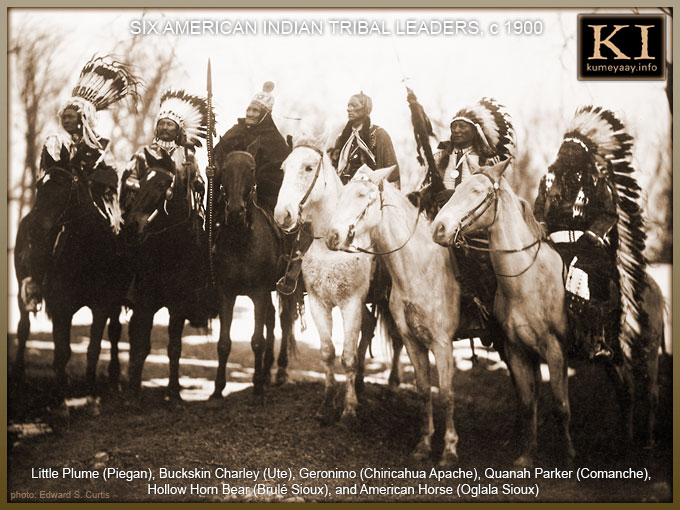
SIX FAMOUS AMERICAN INDIAN LEADERS ON HORSES (l-r) — Little Plume (Piegan), Buckskin Charley (Ute), Geronimo (Chiricahua Apache), Quanah Parker (Comanche), Hollow Horn Bear (Brulé Sioux), and American Horse (Oglala Sioux). Photo: Edward S. Curtis, circa 1900.
|
|
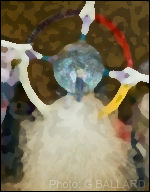 Upon suffering beyond suffering: Upon suffering beyond suffering:
The Red Nation shall rise again and it shall be a blessing for a sick world; a world filled with broken promises, selfishness and separations; a world longing for light again.
I see a time of Seven Generations when all the colors of mankind will gather under the Sacred Tree of Life and the whole Earth will become one circle again.
In that day, there will be those among the Lakota who will carry knowledge and understanding of unity among all living things and the young white ones will come to those of my people and ask for this wisdom.
I salute the light within your eyes where the whole Universe dwells. For when you are at that center within you and I am that place within me, we shall be one.
- Crazy Horse, Oglala Lakota Sioux (circa 1840-1877)
Crazy Horse was noted saying as he smoked the Sacred Pipe with Sitting Bull for the last time — he was killed four days later by US Army soldiers in a hand-to-hand scuffle as they attempted to imprison him. There are no known photographs of Crazy Horse, he would not permit anyone to take his picture, presumably, Crazy Horse believed a photograph stole or unnaturally held the soul of the person(s) pictured.

ONLY THE BEST INSPIRATIONAL QUOTATIONS American tribal and world wisdom...
|
INDIAN GAMING & TRIBAL SOVEREIGNTY
$26-billion-a-year industry: |
|
Legalized tribal gaming in the United States took root in the early 1980s when the state of California attempted to shut down the Cabazon tribe's small bingo hall and cardroom — the Cabazon people took their case all the way to the U.S. Supreme Court (California v. Cabazon Band of Mission Indians) — and they won!
In that landmark decision, the U.S. Supreme Court ruled the casino operated on sovereign Indian reservation land and was thereby outside of state jurisdiction. The Indian Gaming Regulatory Act (1988) ensued and the rest, as they say, is American gambling history....
MAP OF TODAY'S SOUTHERN CALIFORNIA INDIAN CASINOS:
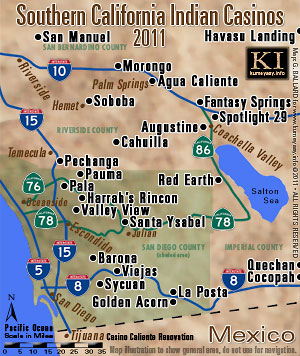
INDIAN CASINO FINDER with high-resolution Casino Map Locator, informative FAQ, historical research study guide to all the best Indian casinos and vacation resorts in Southern California. In this small geographical area there are no fewer than four additional Indian casinos in the proposal-development stages (2012).
INTERNET GAMBLING AND TRIBAL SOVEREIGNTY
Protecting everyone's legal "rights" can get pretty complicated when trying to understand Native American Indian tribes' sovereign authority to expand their modest reservation-based tribal gaming casinos into World-Wide-Web gambling operations on the Internet, and off-reservation casinos where many more billions of dollars are at stake for tribal coffers.
|
|
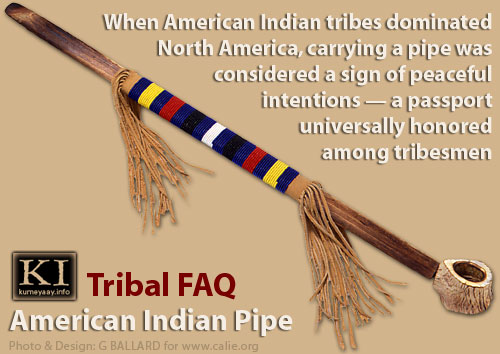
50 Frequently Asked Questions about American Indian tribes — "American Indian or Native American?" | "Tribe or Band?" | "Who is an American Indian?" | "What is Indian Country?" | "What is trust land?" | "What is sovereign immunity?"...
|

KUMEYAAY HISTORY: an editorial essay about the Indigenous tribal peoples of San Diego County — Kumeyaay-Diegueno-Iipay-Tipay-Iipai-Tipai, Luiseño, Cupeño, and Cahuilla indigenous nations of North America.

KUMEYAAY OPINION editorial letters to the Kumeyaay editor.
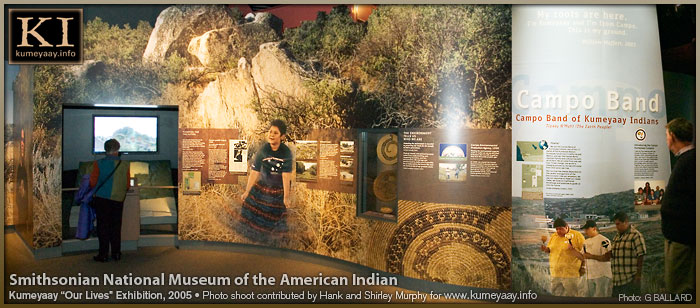
"Our Lives" at the Smithsonian National Museum of the American Indian, Washington D.C., 2005, Campo Kumeyaay band tribal exhibit.
|

